As a self-design 化粧ブラシメーカー, we understand the importance of having the right tools for the job. And when it comes to achieving a flawless foundation application, the type of brush you use can make all the difference. Here’s a breakdown of the most popular foundation brushes and how they can help you achieve your desired look
1. Flat Top Brush
Flat foundation brushes are ideal for liquid and cream foundations. These brushes typically have a flat, paddle-like shape that helps apply foundation smoothly and evenly across the face. The flat bristles allow for precise, streak-free application, making it easier to reach the contours of the face.
They work best with fluid foundations due to their narrow, dense bristles. To use, apply small amounts of foundation to the brush and blend in downward strokes. Whether working on full-coverage or a lighter finish, flat foundation brushes provide a controlled application.
- Bristles: Densely packed, usually synthetic
- Coverage: フル
- Ideal for: Liquid and cream foundations
- Description: This brush is a workhorse for a reason. Its flat top allows for buffing and stippling motions, creating a full-coverage, airbrushed finish. Shangyang’s Flat Top Kabuki Brush is made with high-quality, ultra-soft synthetic fibers that won’t irritate your skin and ensure streak-free application.
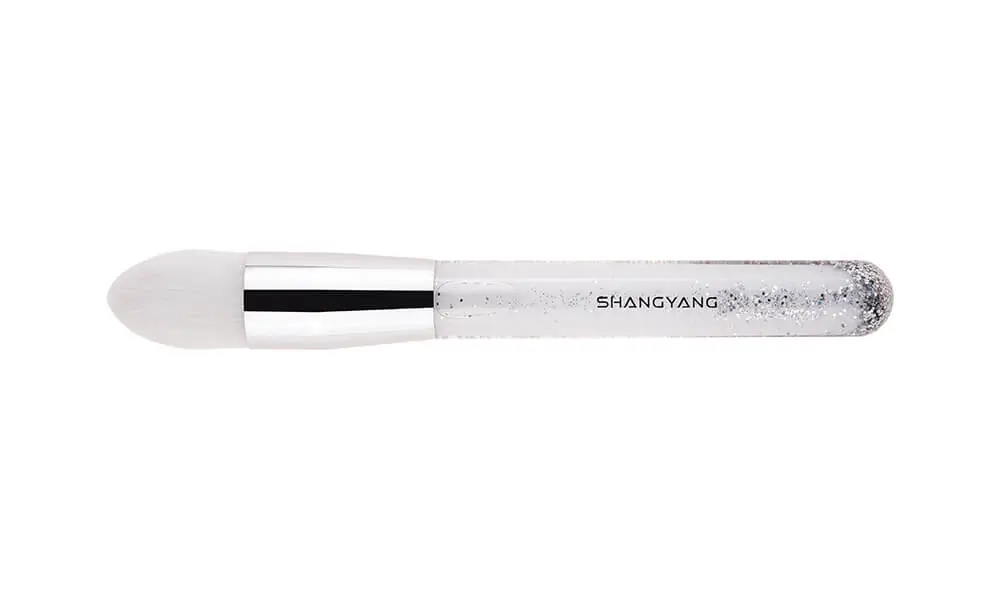
2. Buffing Brush
Buffing foundation brushes are perfect for achieving a flawless, airbrushed finish. These brushes have dense, round bristles that work effectively with liquid, cream, and powder foundations. The circular motions used with buffing brushes help to blend the foundation seamlessly into the skin.
They are particularly useful for building up coverage without caking. For best results, apply foundation in small amounts and buff in circular motions. This method helps achieve a smooth, even texture, minimizing the appearance of pores and fine lines.
- Bristles: Fluffy and full, often synthetic
- Coverage: Medium to full
- Ideal for: Liquid and cream foundations
- Description: This brush is all about creating a smooth, polished look. The circular buffing motion helps to blend out foundation seamlessly, leaving a natural-looking finish.
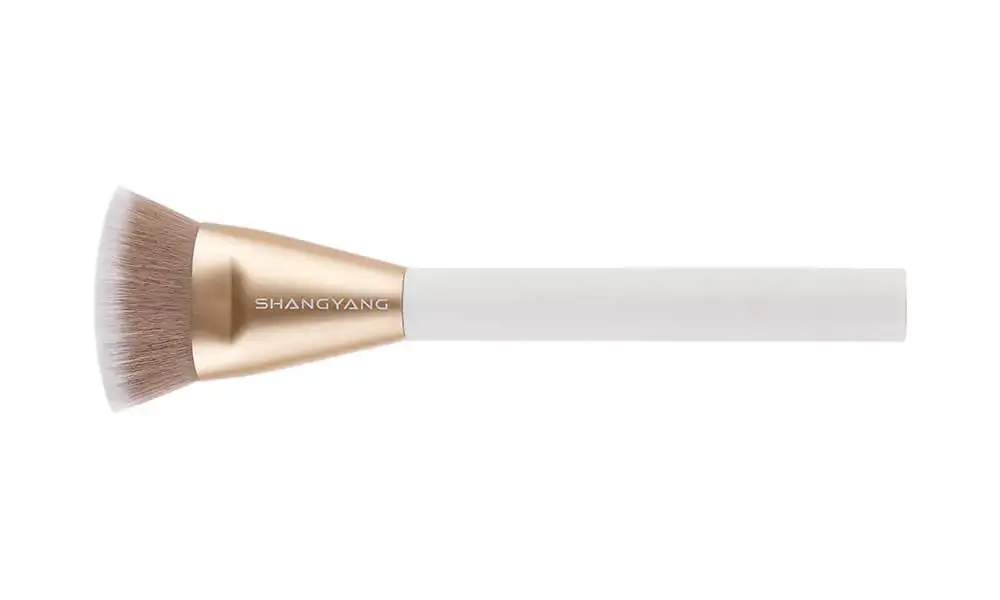
3. Stippling Brush
Stippling brushes are known for their dual-layer bristles, with longer fibers at the top and denser, shorter ones at the base. These brushes are great for a lightweight, buildable coverage and work well with liquid or cream foundations. The stippling technique involves dotting foundation onto the skin and then blending with light, tapping motions.
This method can create a flawless, airbrushed look by gently layering the product. Stippling brushes are also excellent for blending out harsh lines and achieving an even skin tone.
- Bristles: Shorter, looser bristles of varying lengths, often synthetic
- Coverage: Sheer to medium
- Ideal for: Liquid and cream foundations
- Description: For a lighter, more natural look, a stippling brush is your best friend. The unique brush head with bristles of different lengths helps to sheer out foundation and create a soft, airbrushed finish.
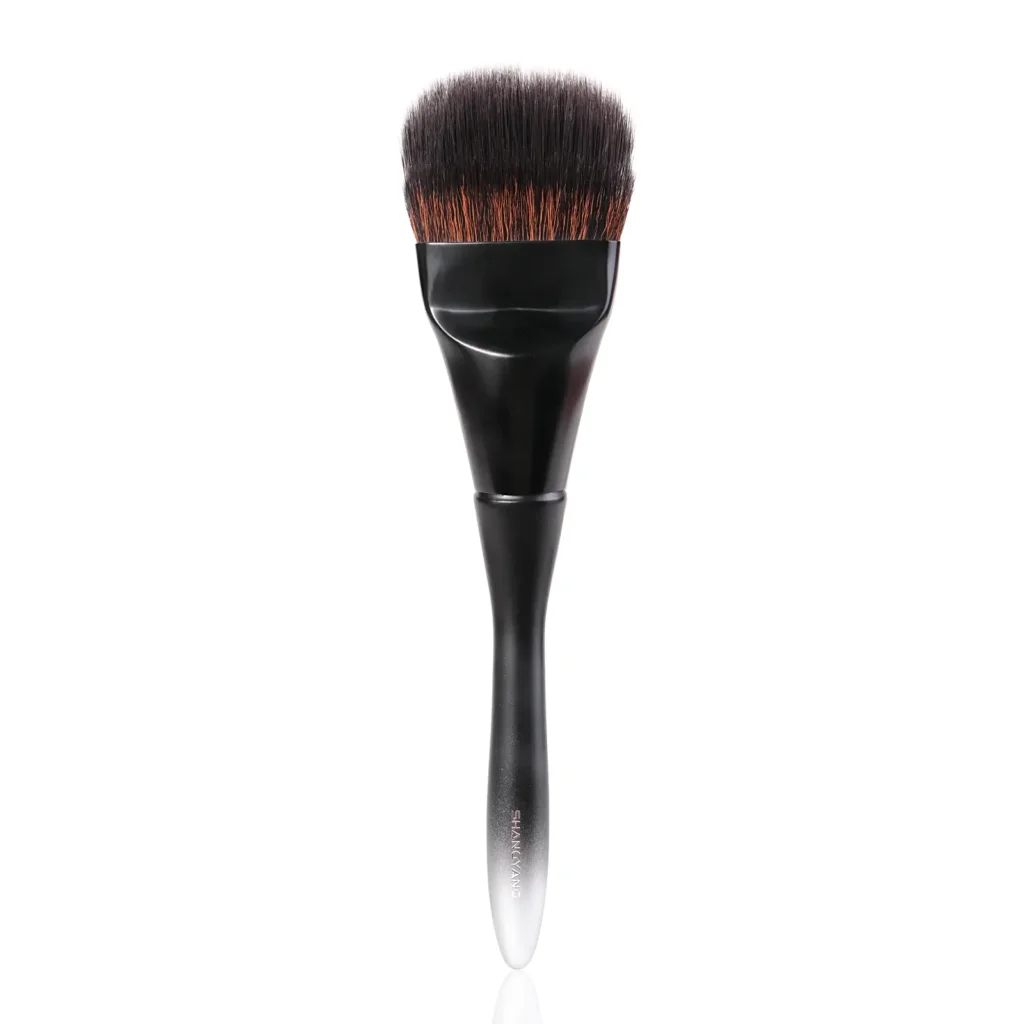
4. Angled Foundation Brush
Angled foundation brushes are designed with slanted bristles, making them perfect for contouring and precise application. These brushes work well with liquid, cream, and even powder foundations. The angled shape allows for better control and can easily navigate the natural angles of the face, such as around the nose and jawline.
They are ideal for applying foundation in a controlled, targeted manner and can also be used to apply highlighter or blush. For the best effects, use sweeping motions to blend the product seamlessly into the skin.
- Bristles: Densely packed, usually synthetic, cut at an angle
- Coverage: Medium to full
- Ideal for: Liquid and cream foundations, especially for contouring
- Description: This brush is a multi-tasker! The angled design allows for precise application and controlled blending around the contours of the face, making it perfect for foundation and even cream contour products.

5. Precision Foundation Brushes
Precision foundation brushes are smaller and typically have tapered or pointed tips. These brushes are designed for detailed application and are perfect for reaching difficult areas such as the corners of the eyes and around the nose. They work well with liquid and cream foundations, allowing for spot correction and detailed blending.
Using a precision brush ensures that every part of the face has even coverage, making it an essential tool for anyone looking to achieve a flawless finish. It can also be used for concealer application and blending small areas.
- Bristles: Dense synthetic, pointed tips
- Coverage: Medium to full
- Ideal for: detailed blending or concealer application
- Description: This brush is perfect for detailed area blending
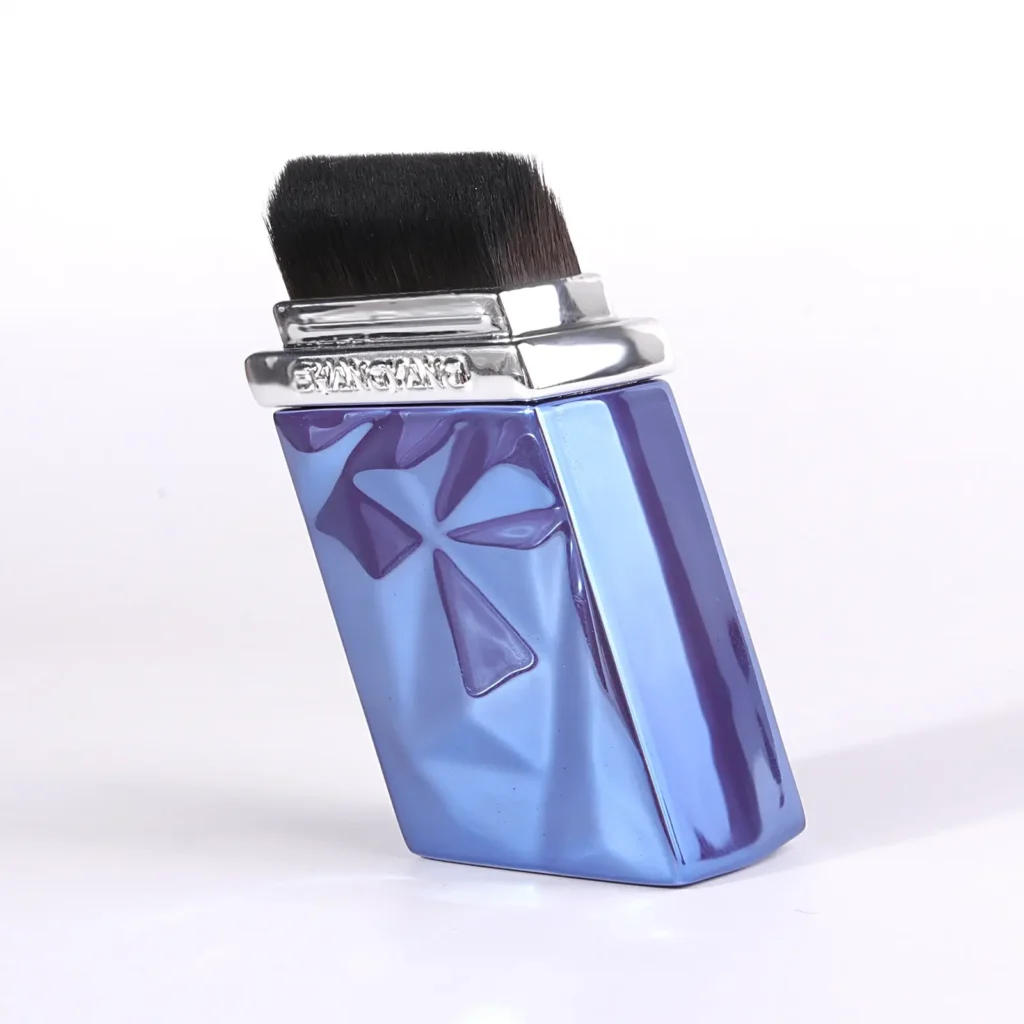
6. Kabuki Foundation Brushes
Kabuki foundation brushes are known for their dense, fluffy bristles and short handles. They are versatile and can be used with liquid, cream, and powder foundations.
The bristles help to buff the foundation into the skin, creating a natural, airbrushed look. Kabuki brushes are also perfect for applying mineral foundation and can be used for finishing powders, making them a versatile addition to any makeup kit.
- Bristles: Shorter bristles, often synthetic
- Coverage: Sheer to medium
- Ideal for: Liquid and cream powder foundations
- Description: Kabuki brushes offer excellent coverage and blending capabilities, making them a favorite for achieving a smooth, even finish. Short handle is perfect for travel or on the go
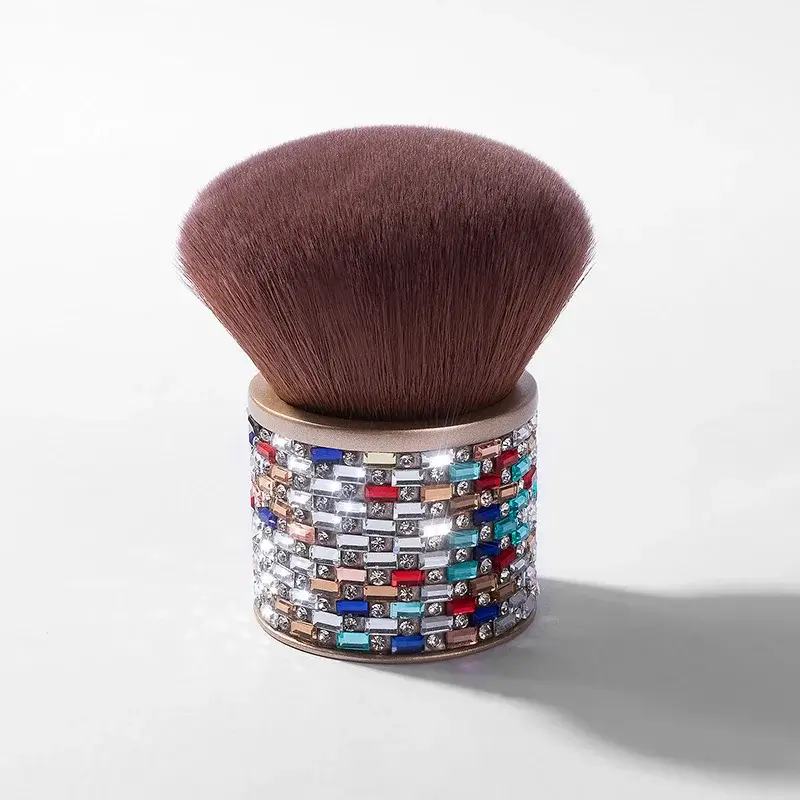
Choosing the Right Foundation Brush
Selecting the perfect foundation brush involves considering the brush hair type, handle length and ergonomics, density and shape, as well as how it impacts the application and coverage of your foundation.
1.Brush Hair Type
Consider your foundation type. Synthetic bristles are generally better for liquid and cream formulas, while natural bristles can be used with powder foundations.
2.Handle Length and Ergonomics
The handle length and ergonomics of a foundation brush are crucial for comfort and control. A longer handle provides better leverage, making it easier to blend foundation seamlessly. Makeup artists often prefer longer handles as it allows them to apply makeup more precisely.On the other hand, shorter handles offer better control for detailed work and are easier to pack for travel. Consider your lifestyle and application preferences when choosing between these options.
3.Density and Shape
Brush density and shape significantly affect foundation application and the final look. Dense brushes provide fuller coverage and are great for buffing product into the skin. Lighter, less dense brushes are suitable for sheer to medium coverage and offer a more natural finish. So for full coverage, opt for a flat top kabuki brush. For a lighter look, a stippling brush is ideal. Buffing brushes offer a medium coverage that can be built up.Dense flat brushes pack on more foundation, giving a polished, full-coverage finish. Kabuki brushes, known for their dense bristles, also work well for this purpose.
The shape of the brush affects coverage and blending. Flat brushes offer precise application, making them suitable for detailed work and full coverage. Round brushes are better for buffing and blending, giving a more natural finish. Choosing the right shape helps control the foundation’s appearance and overall finish on the skin.
4.Personal Preference
Ultimately, the best brush is the one that feels comfortable in your hand and helps you achieve your desired look.

もっと読む





